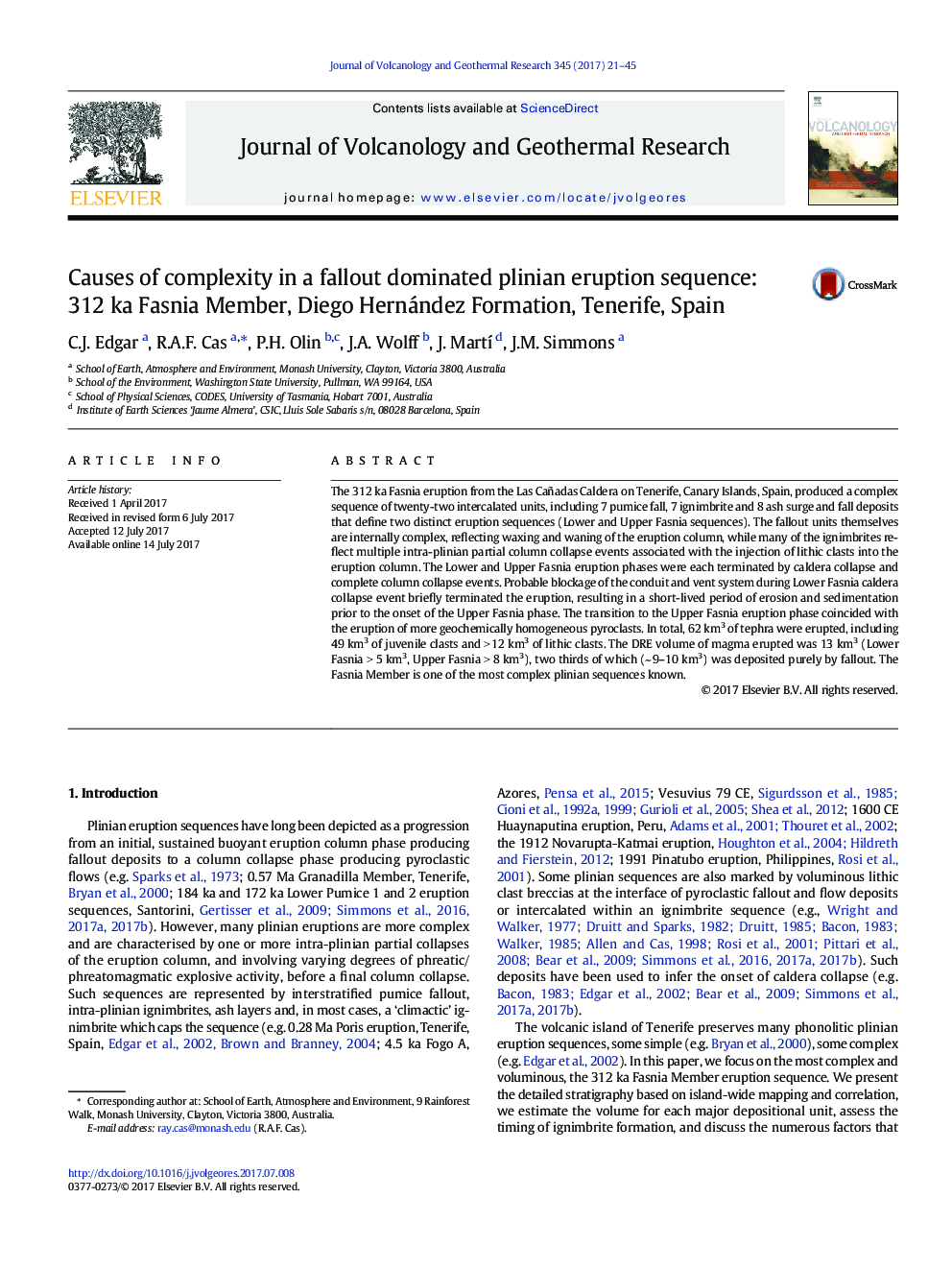| کد مقاله | کد نشریه | سال انتشار | مقاله انگلیسی | نسخه تمام متن |
|---|---|---|---|---|
| 5783643 | 1638278 | 2017 | 25 صفحه PDF | دانلود رایگان |

- The 312Â ka Fasnia plinian eruption sequence consists of 7 pumice falls, 7 ignimbrites and multiple ash units.
- Partial intra-plinian collapse occurred multiple times.
- 62Â km3 of tephra were erupted, including 49Â km3 of juvenile clasts (13Â km3 DRE magma), and >Â 12Â km3 of lithic clasts.
- Two phases of caldera collapse have been inferred.
The 312 ka Fasnia eruption from the Las Cañadas Caldera on Tenerife, Canary Islands, Spain, produced a complex sequence of twenty-two intercalated units, including 7 pumice fall, 7 ignimbrite and 8 ash surge and fall deposits that define two distinct eruption sequences (Lower and Upper Fasnia sequences). The fallout units themselves are internally complex, reflecting waxing and waning of the eruption column, while many of the ignimbrites reflect multiple intra-plinian partial column collapse events associated with the injection of lithic clasts into the eruption column. The Lower and Upper Fasnia eruption phases were each terminated by caldera collapse and complete column collapse events. Probable blockage of the conduit and vent system during Lower Fasnia caldera collapse event briefly terminated the eruption, resulting in a short-lived period of erosion and sedimentation prior to the onset of the Upper Fasnia phase. The transition to the Upper Fasnia eruption phase coincided with the eruption of more geochemically homogeneous pyroclasts. In total, 62 km3 of tephra were erupted, including 49 km3 of juvenile clasts and > 12 km3 of lithic clasts. The DRE volume of magma erupted was 13 km3 (Lower Fasnia > 5 km3, Upper Fasnia > 8 km3), two thirds of which (~ 9-10 km3) was deposited purely by fallout. The Fasnia Member is one of the most complex plinian sequences known.
Journal: Journal of Volcanology and Geothermal Research - Volume 345, 1 October 2017, Pages 21-45